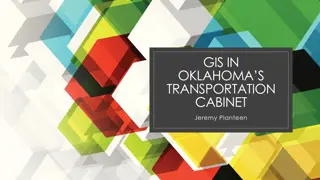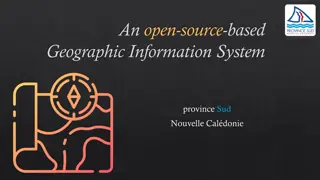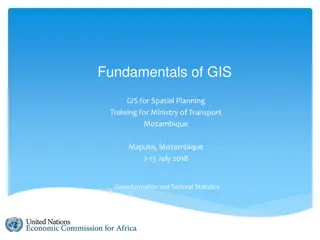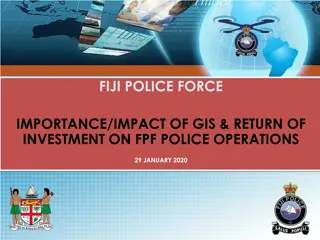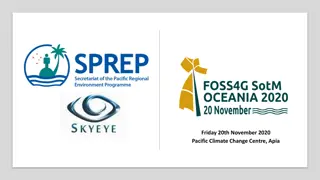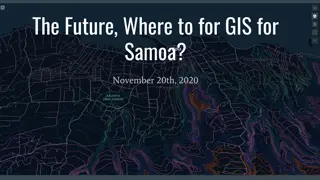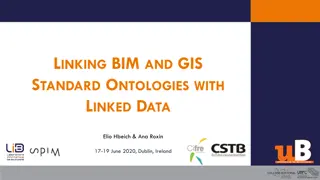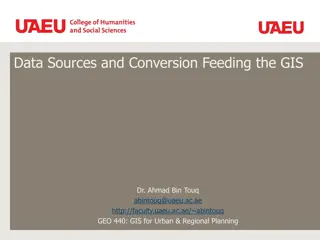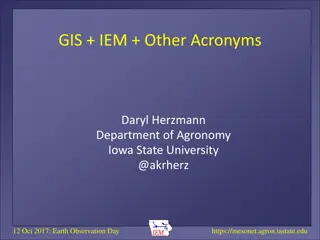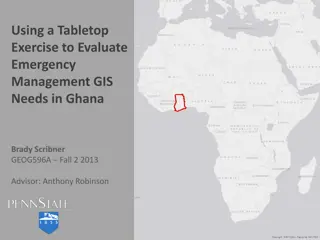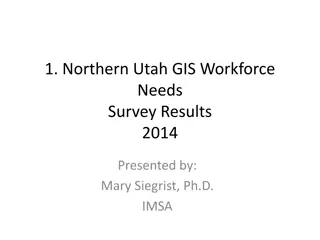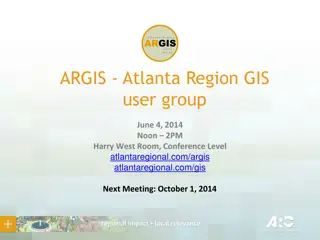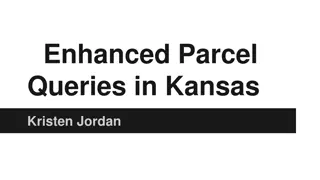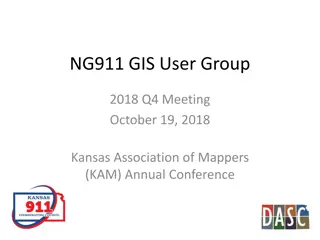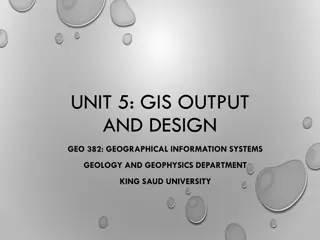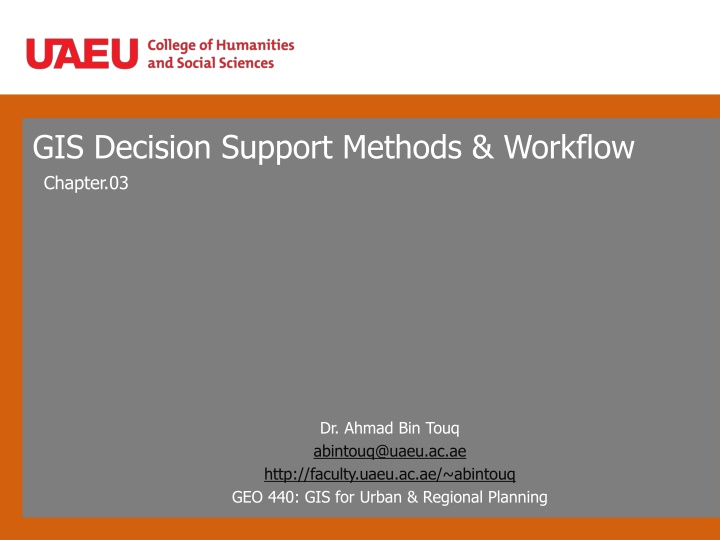
Advanced GIS Capabilities and Workflow Overview
Explore the advanced GIS capabilities integrating various data types for complex decision-making. Dive into GIS project workflows, geocoding, data management, map visualization, feature analysis, and more to enhance urban and regional planning.
Download Presentation

Please find below an Image/Link to download the presentation.
The content on the website is provided AS IS for your information and personal use only. It may not be sold, licensed, or shared on other websites without obtaining consent from the author. If you encounter any issues during the download, it is possible that the publisher has removed the file from their server.
You are allowed to download the files provided on this website for personal or commercial use, subject to the condition that they are used lawfully. All files are the property of their respective owners.
The content on the website is provided AS IS for your information and personal use only. It may not be sold, licensed, or shared on other websites without obtaining consent from the author.
E N D
Presentation Transcript
GIS Decision Support Methods & Workflow Chapter.03 Dr. Ahmad Bin Touq abintouq@uaeu.ac.ae http://faculty.uaeu.ac.ae/~abintouq GEO 440: GIS for Urban & Regional Planning
Overview Chapter. 3 1.Overview of GIS Capabilities A. Geocoding Tools, B. Data Management Tools C. Map Visualization Tools D. Feature Analysis Tools E. Grid Analysis Tools F. Network Analysis Tools 2.Workflow in GIS Projects A. Basic Workflow B. Nuanced Workflow C. Synthesizing Basic 3.Summary and Review Questions
GIS Capabilities - GIS is known for its ability to integrate various types of data to address complex decision problems. Example - Difference between a GIS project and a community improvement project. For example, a wastewater treatment facility is a community improvement project, but the process of sitting such a project, as presented in the case study, provides a step-by-step method for undertaking a GIS project.
Dumping site Legality Economy Environment Atmosphere Water Biotic life Soil Surface water Groundwater
GIS Capabilities GIS is a special information technology because it integrates capabilities from three fundamental technologies Data management capabilities Spatial analysis capabilities Map visualization capabilities 1. 2. 3.
Geographical objects Landuse Topography Soil type Utility Rivers Roads District Lots
Data collection Spatial + Attribute data Geology, Groundwater Rivers, Coastal line Soil, Land use Airport, Roads Settlements, Hotels
Steps for data preparation Digitization under AutoCad Import to ArcMap Create topology Build and Clean Check feature accuracy Transform to real coordinate Add attribute data ArcMap- shape files Geographic database Geographic analysis
Perform spatial operations Feature extraction from a GIS database (Reselect) Map overlay (Intersect, Union, Mapjoin) Proximity searches (Buffering)
Workflow GIS workflows simple, nuanced, and combined to show that any two workflows, when compared, can generate at least one more workflow that perhaps might be more informed. Simple workflow (comprising four phases) is good enough to learn the basics of GIS. Four phases Another workflow that has shown considerable success in addressing complex landscape planning problems introduced by Steinitz (1990). Each phase is a special modelling step. Six phases Third workflow is a synthesis of the other two, resulting in a seven-phase workflow. The main point is not simply to develop one more workflow, but to show that workflows can often take on emergent qualities to address special nuances of decision problems. Seven phases
Basic Workflow for a GIS Project This simplified workflow method assumes that a decision problem can be solved by a single pass through a workflow, with limited testing of assumptions in each of four phases: (1) Identify project objectives, (2) Develop the database, (3) Perform analysis, and (4) Report the results. It is useful and instructive because of the simplifying assumptions regarding water flow process and impacts, for example, land use, transportation, and/or water resource movement, over space and time.
The flow chart outlines the solar energy station siting model that would be performed in this research project:
Example Project Steps Layer 1: Lake Layer 2: Forest Layer 3: Soil Drainage Spread Recode Recode Layer 4: Loggable Species Layer 5: Drained Soils Layer 6: Near Lake Recode Recode Layer 7: Away From Lake Layer 8: Species And Soils OverLay Layer 9: Loggable Sites
3.2 Workflow in GI S Projects Suitable zones Reselect Buffer Intersect suitable zones for each factor Geology Land use Soil Rainfall Roads Rivers The best zones User interaction
Chapter. 3 Summary (1) describing many of the general capabilities of software and the ways these capabilities address decision problems, and (2) Presenting different GIS workflows that make use of capabilities. Projects is in terms of how communities want to plan, program, and implement land use, transportation, and/or water resource activities to restore, redevelop, or otherwise improve quality of life. Projects is in terms of how we make use of GIS in a decision situation the so-called GIS project. GIS analysts undertake GIS projects, working with data to address community concerns about community projects.

